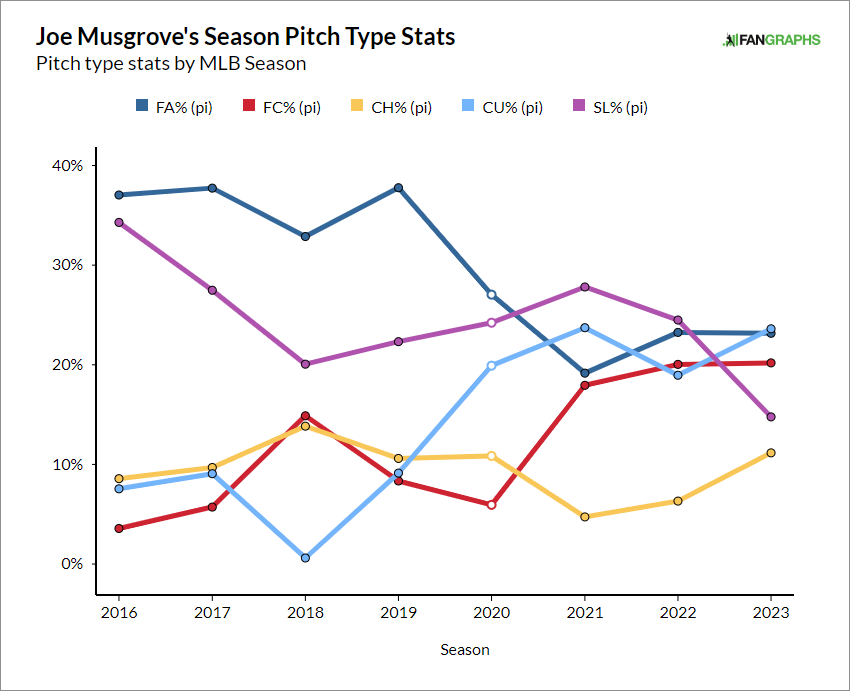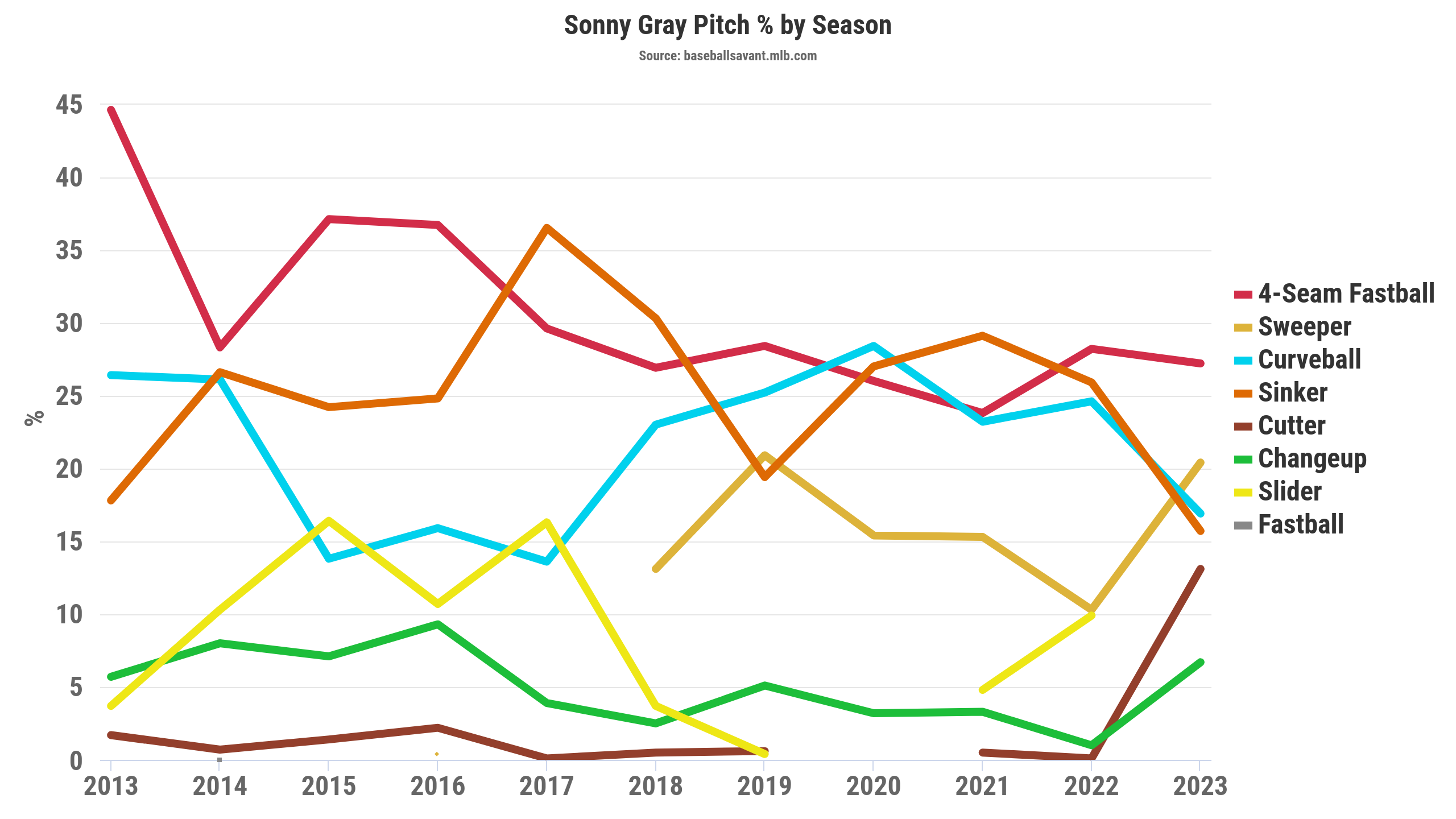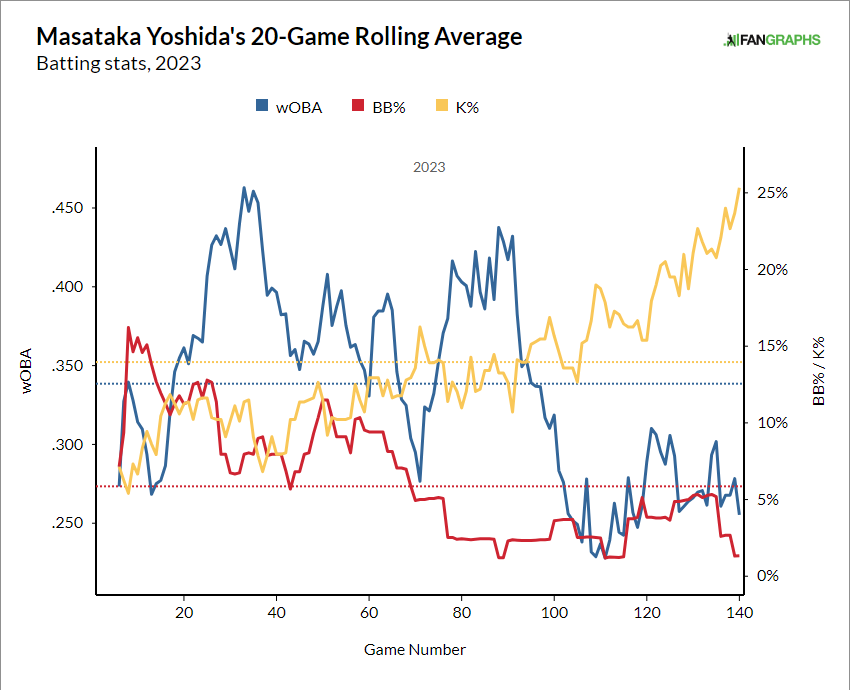After Jake, Lucas and I covered MI two weeks ago, Lucas got us started on CI Wednesday and Jake followed up this morning. Now, it’s my turn to look at my toughest CI decisions.
–
Jeimer Candelario, 1B/3B
Salary: $3.00
Average Salary: $4.31
2023 P/G: 5.38
Proj 2024 P/G: 4.74
There are some caveats needed on all those numbers. First, I have Candelario in a 4×4 league, not FanGraphs Points, so the P/G (both past and projected) are less relevant, though they are still a good short-hand for his value, and his projections are worth about the same in both formats. Per Justin Vibber’s Surplus Calculator, Candelario is a $3 player in points and $3.30 in 4×4. By percentage, that is a big difference. But in terms of his actual value, it’s negligible.
The other caveat is that while the projected P/G represents a pretty big drop from 2024, it’s very much in with what he did after his trade to the Cubs (4.59 P/G).
Candelario appeared to break out in 2017, when he moved to Detroit and exploded for a .379 wOBA in a brief 106 PA. He improved his K-rate but mostly he hit for a really high BABIP (.392) and it wasn’t a huge surprise when the BABIP deflated the next season. More disappointing was the return to a 25% K-rate, losing almost all the gains he showed in 2017.
After down years in 2018 and 2019, he appeared to break out again in the shortened 2020. Again BABIP played a big role, but he also nearly doubled his HR/FB rate (thanks at least in part to doubling his barrel rate) and brought the K’s down a couple of percentage points again. And this time it mostly stuck. 2021 and 2023 were both good years – not quite to 2020 standards) but good enough.
Following his career, you can see the slowly improving K-rate and HR/FB rate, but you can also see how wOBA has followed BABIP.

The concerning thing from this chart is that Candelario lacks the power to overcome BABIP issues – top power hitters hit enough balls out of the park and draw enough walks that a low BABIP hurts but doesn’t kill. Candelario isn’t that kind of hitter and when the BABIP dipped to .257 in 2022, he became unusable in Ottoneu.
The positive thing is that with even an average BABIP, he is a pretty solid overall player – definitely better than what his projection. Candelario has been a .344 or higher wOBA three of the last four years, with the one exception being the year his BABIP dropped below .260. It was also the year he posted outlier chase- and swing-rates, leading to an equally outlier career-low walk rate. His hard-hit-rate and xwOBA were also well below the levels he showed in 2020, 2021 and 2023.
My read is that 2022 was an outlier season for him, but that 2020 was also an outlier on the other end. Over this four-year stretch he has a .331 wOBA but, as noted above, has been .344 or higher three of four years.
Keep or Cut?
All of that is enough for me to take the over on his projected .323 wOBA, with the caveat that we don’t know yet where he will be playing. And for Candelario, it is not as easy as saying, “I hope he lands in a good hitter’s park!” I am not sure, for example, that Yankee Stadium, with it’s AL-leading 116 park factor for HR, per Baseball Savant, is such a great fit given it’s low park factors for singles, doubles, and triples. Had he played all of his games at Yankee Stadium in 2023, instead of 22 HR he would have had…22 HR. I am planning to keep Candelario and I wouldn’t hesitate to do so at or even a little above his average salary, despite the projection. But I’ll be watching where he lands and adjusting.
–
Vinnie Pasquantino, 1B
Salary: $10.00
Average Salary: $9.91
2023 P/G: 4.97
Proj 2024 P/G: 6.01
Oh baby, check out that projection. Easy call, right? That’s a $20 bat, even at 1B. Ok, it is more like $15-$20 in 4×4, but still, no-brainer!
Except in 558 career PA, Pasquantino has put up 5.34 P/G and suffered a serious shoulder injury that cost him most of 2023. And shoulder injuries are not great. Jeff Zimmerman covered this last year in relation to Fernando Tatis Jr. and basically found that shoulder surgeries and hitters don’t mix so well. Tatis followed the pattern, performing fairly poorly (.332 wOBA, a .067 drop from his career numbers coming into the year) in 2023.
On the other hand, Corbin Carroll missed almost all of 2021 with a torn labrum, bounced back well in 2022 and was a breakout star in 2023. And you can make the case (and I don’t think this is a crazy stretch) that we should downplay Pasquantino’s 2023 4.97 P/G because he was trying to play through shoulder issues – that isn’t a “healthy baseline” for him, it’s something he should improve from once he gets back to full health.
Given the short and messy MLB track record, Pasquantino should be a bit polarizing and it is hard to take a $20 projection as reliable. It’s not that it is wrong, but if that is the middle of his range of possible outcomes, I have much lower confidence/certainty that he will achieve that than I would for a seasoned veteran.
That has both positive and negative implications. Positive because Pasquantino is more likely to put up a breakout year than an older, more established player with a reliable baseline. Negative because Pasquantino is more likely to fall on his face than that more established player. Plus you have to worry about injury risk.
Keep or Cut?
It’s still a no-brainer for me to keep Pasquantino if my other option is to cut. I am not comfortable banking $20+ in value from him or even assuming he can lock down my 1B spot. I like him as part of a group with depth, where I can use him if he breaks out and absorb the hit if he doesn’t. And at $10 that is an easy keep. But if another manager is drooling over his $40 upside and buying hard on a $20+ projection, I am more than happy to make a deal.
–
Pete Alonso, 1B
Salary: $31.00, $42.00
Average Salary: $34.51
2023 P/G: 5.77
Proj 2024 P/G: 6.21
I have Alonso in one FanGraphs Points league (at $31) and one 4×4 league (at $42) and they are both somewhat interesting choices. The Polar Bear is coming off arguably the worst season of his career (2020 was a little worse, but it was also much shorter) and those are some pretty steep prices.
Speaking of “worst season of his career;” that helps explain the near 0.50 P/G jump in his 2024 projection vs. his 2023 season. Alonso was at 6.1 and 6.3 in 2021 and 2022, and has a 7 P/G season under his belt, as well (the 2019 rabbit ball year, which maybe shouldn’t count). And even that 5.77 wasn’t bad – it was top ten at 1B in 2023!
But even a bounceback season as projected by Steamer, back in line with what we would have expected before 2023, is only worth $26 in FanGraphs Points and $31 in 4×4 (yes, he is one of the rare players worth more in 4×4, thanks to high OBP and prodigious power). After accounting for inflation, that makes both of those prices pretty fair, if I buy the projection. But do I buy the projection?
In short, yes. What happened to Alonso in 2023 is pretty easy to explain. He struck out and walked around his career norms, but he posted a .205 BABIP after coming in with a .274 career BABIP. Some of that can be attributed to a career-high FB-rate paired with a career-low LD-rate – when you trade liners for fly balls, your BABIP will go down. But, for a power-hitter like Alonso, seeing the fly ball rate increase isn’t major cause for concern. And given the fickle nature of LD-rates, I would bet on positive regression there.
He also increased his barrel-rate and xwOBA despite a lower hard-hit rate. In 27 fewer PA, he hit more balls over 110 mph in 2023 (61) as 2022 (60). If his drop in hard-hit rate were decline-related (or injury-related, or anything else other than mostly noise), I would expect to see every bucket get lower – some of his 115+ mph contact would turn into 110-114 mph and some of his 110-114 mph would turn into 105-109, and so on. At least for his top-end power, we are not seeing that at all.
The more I look, the more his “rough” 2023 looks like bad luck on BABIP resulting in underperforming his xwOBA and nothing more. In fact, if you buy the increase in FB-rate and believe the line drives will come back, you could make a case that he is primed for a career year.
Keep or Cut?
Keep. In league 13, that $31 price just isn’t high enough to want to cut him, especially given that team just won a championship and we can, effectively, run it back even keeping our highest-priced stars. In league 1199, I did a hard rebuild starting mid-2023 and Alonso is a perfectly solid keeper for me to either a) add some high-end talent to a young, inexpensive team where I can afford to pay up for a stud, or b) hold and trade with a loan in May if things go sideways quickly. In both cases, I am open to trading Alonso – in 13, I also have Matt Olson and while I plan to keep both, I don’t have to keep both and in 1199, I have youth at 1B that I like, and could move Alonso for help at other spots. But I expect I’ll still have them both in January.
–
Alec Bohm, 1B/3b
Salary: $7.00, 6.00
Average Salary: $9.34
2023 P/G: 4.98
Proj 2024 P/G: 4.95
Bohm is another I have in one FanGraphs Points league (league 13 at $7) and one roto (1443 at $6) but in this case the roto league is 5×5. This matters because Bohm’s high average and nice batting slot in a strong offense makes him a pretty solid 5×5 contributor. We often look at speed and power for 5×5, but a guy who offers high average while scoring and driving in a decent number of runs is a pretty solid option.
The challenge is that Bohm isn’t great in either format. These prices are pretty close to how he projects and how he projects is pretty close to his 2023 and his 2023 looks like a pretty fair progression for his career without a lot of reason to think it’s an outlier. It’s just not exciting.
You can see that progression looking at his plate discipline over time.

The walk rate has been steady, though you can kinda see an uptick from 2022 through 2023, but his K-rate has been in decline. His first full season, in 2021, strikeouts were an issue. By 2023, they were a strength, helping that high average. Statcast sliders are pretty imperfect, but they can be a useful shorthand and this is pretty telling:

Bohm does not hit the ball super hard, but he makes contact at a high rate, avoids strikeouts, puts the ball in play and is better-than-average and finding the sweet spot, leading to a high line-drive rate.
That all means we can and should expect more of the same from Bohm, which is what Steamer is seeing, as well. That makes him – in both points and 5×5 – a solid 3B option, maybe not a guy you want as your starter but certainly a guy you can live with.
Keep or Cut?
Honestly, I am not sure. Right now, keep. Come January, I sort of hope I have better options – either a legitimate stud starter who is clearly better than Bohm or someone with more upside I can dream on (or both!) and Bohm isn’t a necessity. I still might keep him in that case – he is a solid insurance policy at 3B – but I am not sure I feel all that good about it.












